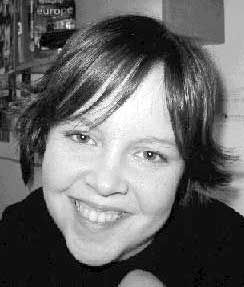
Where books and movies mix
I’ve been reading this book lately, Easy Riders, Raging Bulls by Peter Biskind – rereading, actually. I first picked it up last semester, intrigued not only by the garish and somewhat retro orange and red cover, but also by the review quote on the cover attributed to the Sunday Times: “If there is a better book about the inside of the film industry…I’d like to see it.”
Now that is a tagline to catch my attention. As you may or may not know, I am an aspiring screenwriter, a “wanna-be” contender in the Hollywood game of life. I like to blame my cinematic aspirations on the string of actors I have dated the past few years, but I think in reality it is the other way around. I date actors to get closer to the glitz, the glamour, the “lights, camera, action!”
I also tend to surround myself with people interested in theatre and film, and I have come to be quite the film snob. Without Joe, where would my love for Kevin Spacey be? Without Keith, how would I express love as candidly as Shakespeare does? And then there is FourPlayers Productions, the theatre/film production company my young, ambitious friends began a few years ago in hopes of parlaying some elbow grease into a future. Without them, where would I have gotten my appreciation for the theatre, my love for New York or my devotion to Neil Diamond?
I digress. Biskind’s book is a tome of cinematic lore from the decades that brought you every movie from, well, Easy Rider to Raging Bull. Covering the rise of Francis Ford Coppola, Peter Bogdanovich, Martin Scorcese and nearly every other influential American “new Hollywood” director, the book begins in 1967 with the conception Bonnie & Clyde and Easy Rider. The rise of the director as the auteur follows, and ends in the mid-to-late 1980s with Scorcese’s Raging Bull and the re-emergence of the studio system.
The book does well at coming full circle, and reveals as much gossip as possible about the main players in Hollywood in what should surely become a movie in its own right. But Biskind, a journalist by trade, manages to focus the dirty laundry within an historical context, citing the impact of the Sharon Tate / LaBianca murders on Hollywood, the importance of Vietnam and the growing defiance of the emerging baby boomers.
As far as the films produced, Biskind qualifies the era as a return to realism, citing the increased violence and the willingness of directors to have unhappy endings.
Now on my third reading, Easy Riders, Raging Bulls has begun to sink into my psyche, and I cant help but judge the movies around me on the ideals of that era of sex, drugs and rock n’ roll.
In particular, I have begun to wonder when the next “era” will begin, who will helm the next “golden age” and what these new auteurs will focus on. After seeing Amelie, the little French film with a lot of heart, I can’t help but hope movies will deviate from what is real and delve into fantasy, using whimsical visual and unorthodox narrative sequences to further the plot.












